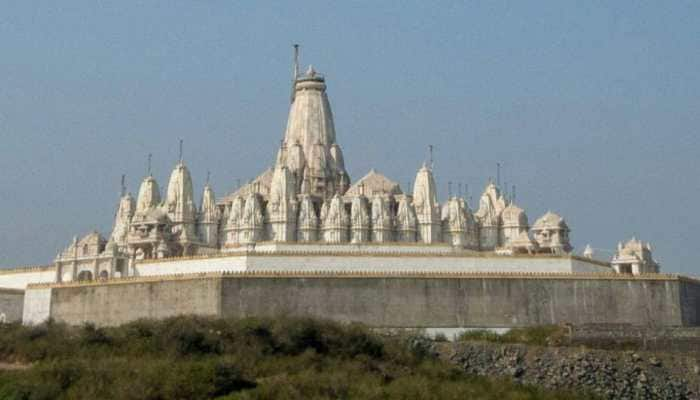First images of Martian moon Phobos in infrared wavelengths captured by NASA's Mars Odyssey
Phobos has an oblong shape with an average diameter of about 22 kilometres.
Trending Photos
) Image courtesy: NASA/JPL-Caltech/ASU
Image courtesy: NASA/JPL-Caltech/ASU New Delhi: The numerous probes orbiting Mars have made it possible for scientists to delve deep into its interiors and helped revolutionise their understanding of the Red Planet.
One such probe is NASA's Mars Odyssey, which has been investigating Mars for 16 years, has just managed to its first images of the Martian moon Phobos.
The Thermal Emission Imaging System (THEMIS) camera on Mars Odyssey orbiter, launched in 2001, observed Phobos on September 29.
Phobos has an oblong shape with an average diameter of about 22 kilometres.
Cameras on other Mars orbiters have previously taken higher-resolution images of Phobos, but none with the infrared information available from THEMIS.
Observations in multiple bands of thermal-infrared wavelengths can yield information about the mineral composition of the surface, as well as the surface texture, NASA said in a statement this week.
"Although THEMIS has been at Mars for 16 years, this was the first time we have been able to turn the spacecraft around to look at Phobos," said THEMIS Mission Planner Jonathon Hill of Arizona State University.
The researchers combined visible-wavelength and infrared data to produce an image colour-coded for surface temperatures of this moon, which has been considered for a potential future human-mission outpost, NASA said.
"This half-moon view of Phobos was chosen because it allowed us to observe a wide range of temperatures on the surface," Hill added.
One major question about Phobos and Mars' even smaller moon, Deimos, is whether they are captured asteroids or bits of Mars knocked into the sky by impact.
The researchers believe that compositional information from THEMIS might help pin down their origin.
Since Odyssey began orbiting the Red Planet in 2001, THEMIS has provided compositional and thermal properties information from all over Mars, but never before imaged either Martian moon.
The September 29 observation was completed to validate that the spacecraft could safely do so, as the start of a possible series of observations of Phobos and Deimos in coming months.
"There is heightened interest in Phobos because of the possibility that future astronauts could perhaps use it as an outpost," said Odyssey Project Scientist Jeffrey Plaut of NASA's Jet Propulsion Laboratory in Pasadena, California.
(With IANS inputs)
Stay informed on all the latest news, real-time breaking news updates, and follow all the important headlines in india news and world News on Zee News.
Live Tv







)
)
)
)
)
)
)
)
)
)
